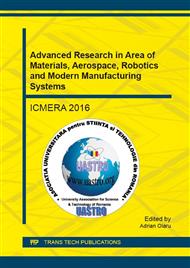[1]
International Energy Agency, Tracking Clean Energy Progress 2014, p.84, (2014).
Google Scholar
[2]
J. A. Clarke and J. L. M. Hensen, Integrated Building Performance Simulation: Progress, Prospects and Requirements, Build. Environ., vol. 91, p.294–306, Apr. (2015).
DOI: 10.1016/j.buildenv.2015.04.002
Google Scholar
[3]
X. Pang, T. S. Nouidui, M. Wetter, D. Fuller, A. Liao, and P. Haves, Building energy simulation in real time through an open standard interface, Energy Build., (2015).
DOI: 10.1016/j.enbuild.2015.10.025
Google Scholar
[4]
T. van Hooff, B. Blocken, H. J. P. Timmermans, and J. L. M. Hensen, Analysis of the predicted effect of passive climate adaptation measures on energy demand for cooling and heating in a residential building, Energy, vol. 94, p.811–820, Jan. (2016).
DOI: 10.1016/j.energy.2015.11.036
Google Scholar
[5]
Y. Ji and P. Xu, A bottom-up and procedural calibration method for building energy simulation models based on hourly electricity submetering data, Energy, vol. 93, p.2337–2350, Dec. (2015).
DOI: 10.1016/j.energy.2015.10.109
Google Scholar
[6]
V. Monetti, E. Davin, E. Fabrizio, P. André, and M. Filippi, Calibration of Building Energy Simulation Models Based on Optimization: A Case Study, Energy Procedia, vol. 78, p.2971–2976, (2015).
DOI: 10.1016/j.egypro.2015.11.693
Google Scholar
[7]
B. James, Load Control Using Building Thermal Mass, Trans. ASME, vol. 125, no. August, p.292, (2003).
Google Scholar
[8]
D. Gyalistras and M. Gwerder, Use of weather and occupancy forecasts for optimal building climate control (OptiControl): Two years progress report, no. September. (2009).
Google Scholar
[9]
M. Gwerder and J. Tödtli, Predictive Control for Thermal Storage Management in Buildings, 8th REHVA World Congr. Build. Technol. – CLIMA, no. October, p.1–6, (2005).
Google Scholar
[10]
E. Rodrigues, A. Rita, A. Rodrigues, and Á. Gomes, An approach to urban quarter design using building generative design and thermal performance optimization, Energy Procedia, vol. 78, p.2899–2904, (2015).
DOI: 10.1016/j.egypro.2015.11.662
Google Scholar
[11]
K. Negendahl, Building performance simulation in the early design stage: An introduction to integrated dynamic models, Autom. Constr., vol. 54, p.39–53, Jun. (2015).
DOI: 10.1016/j.autcon.2015.03.002
Google Scholar
[12]
Building Design & Construction | Revit Family | Autodesk., [Online]. Available: http: /www. autodesk. com/products/revit-family/features/all/gallery-view. [Accessed: 10-Aug-2016].
DOI: 10.1002/9781119570189.app3
Google Scholar


